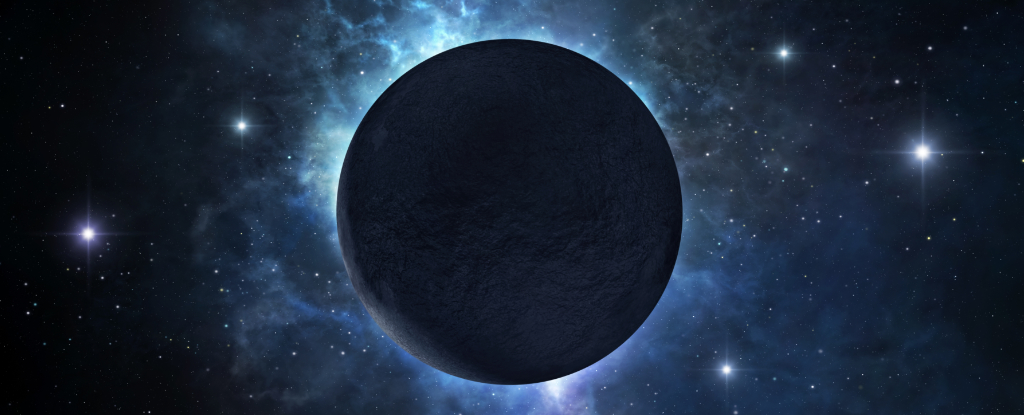New Insights into the Universe: Professor Gaztanaga's Breakthrough Model

Professor Juan Gaztanaga, a prominent figure in the field of cosmology, has recently shared groundbreaking insights regarding the origins of the Universe. In his remarks, he highlighted the limitations of the conventional Big Bang model, which begins with a singularity characterized by infinite density. This point of infinite density represents a significant challenge, as it leads to a breakdown in the laws of physics, indicating that the beginning of the Universe remains a profound mystery.
In a thought-provoking twist, Gaztanaga and his team have approached this age-old question from a fresh perspective. Instead of examining the expanding Universe and theorizing about its inception, they focused on what occurs when a dense concentration of matter succumbs to gravitational forces. Their innovative approach challenges existing paradigms and opens new avenues for inquiry.
The enigmatic nature of black holes continues to perplex scientists. A pivotal milestone in this exploration was achieved in 1965, when Roger Penrose demonstrated that gravitational collapse invariably leads to the formation of a singularity under broad conditions. This finding, later expanded upon by notable physicists like Stephen Hawking, underscored the inevitability of singularities such as the Big Bang. However, these singularity theories primarily rely on classical physics, and there is a growing consensus that incorporating quantum effects—particularly under conditions of extreme density—could alter our understanding significantly.
Professor Gaztanaga elaborated on his team's findings, stating, “We’ve shown that gravitational collapse does not have to end in a singularity. Instead, a collapsing cloud of matter can achieve a high-density state and then experience a bounce, propelling it into a new phase of expansion.” This crucial bounce, he noted, occurs entirely within the framework of general relativity while also integrating fundamental principles of quantum mechanics. The outcome of this process is a Universe that closely resembles our own, and intriguingly, this rebound naturally initiates a phase of accelerated expansion, not propelled by hypothetical fields but rather driven by the physics inherent in the bounce itself.
Gaztanaga’s team has developed a comprehensive solution that not only confirms the feasibility of this bounce but also suggests that such an event is inevitable given the right conditions. One of the compelling aspects of this new model is its predictive power, which means that these hypotheses can be rigorously tested. Remarkably, the model also indicates that the Universe is slightly curved, akin to the surface of the Earth, challenging previous assumptions.
This Black Hole Universe model transcends mere technical adjustments to standard cosmological theories; it offers a transformative perspective on humanity's position within the cosmos. Additionally, it has the potential to illuminate other profound mysteries regarding the early Universe, such as the origins of supermassive black holes, the characteristics of dark matter, and the processes underlying galaxy formation and evolution.
In this context, the ARRAKIHS ESA space mission, where Professor Gaztanaga serves as the Science Coordinator, is poised to revolutionize our understanding and address these critical questions. ARRAKIHS has been meticulously designed to detect ultra-low surface brightness structures located in the outer regions of galaxies. These regions are crucial for comprehending the fossil record of galaxy formation and the assembly of dark matter. By analyzing these faint features, scientists may uncover vital insights into galaxy growth and evolution and potentially explore conditions that diverge from the predictions set forth by the conventional Big Bang model.
The ARRAKIHS satellite is outfitted with a quartet of wide-angle telescopes that simultaneously observe the same area of the sky. Two of these telescopes utilize cutting-edge near-infrared technology, while one operates in the optical range and another in the near-ultraviolet spectrum. The innovative filter system proposed and defined by the Institute of Cosmology and Gravitation (ICG) is integral to this mission. These advanced space-based capabilities will enable researchers to detect signs of star formation and black hole accretion, which cannot be effectively captured by ground-based observatories. Consequently, this mission promises to unveil the formation history of galaxies, including our own Milky Way.
Professor Gaztanaga leads an international team that includes researchers Sravan Kumar and Swaraj Pradhan from the University of Portsmouth, alongside Michael Gabler from the Universitat de Valencia's Departmento de Astronomia y Astrofisica in Spain. In addition to his academic role, Gaztanaga is a faculty member at the Institute of Space Sciences (CSIC/IEEC) in Barcelona and maintains a science blog titled Dark Cosmos, where he shares insights and discussions about the cosmos.


























